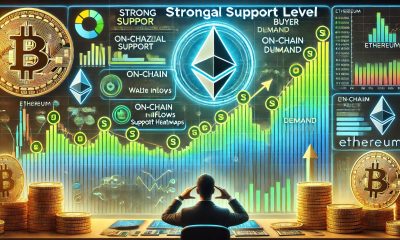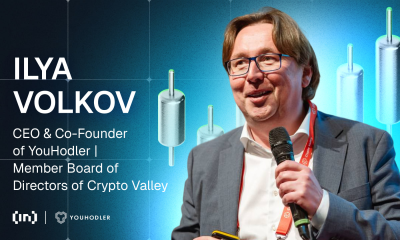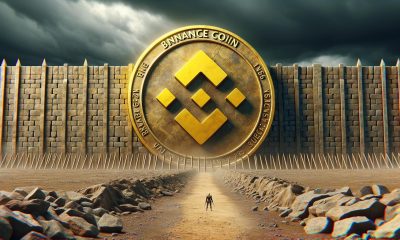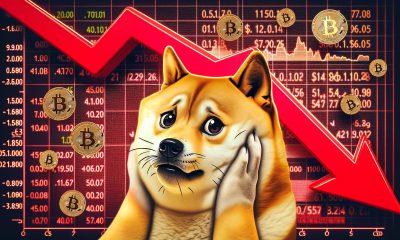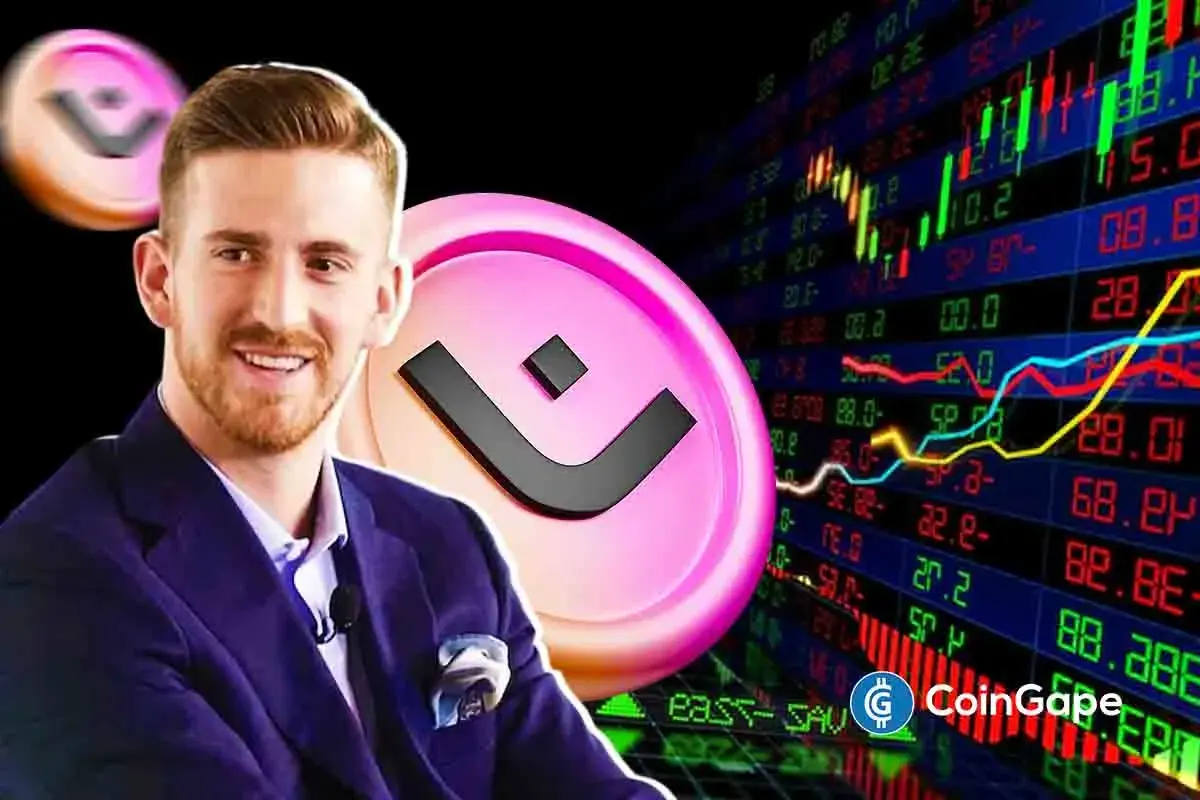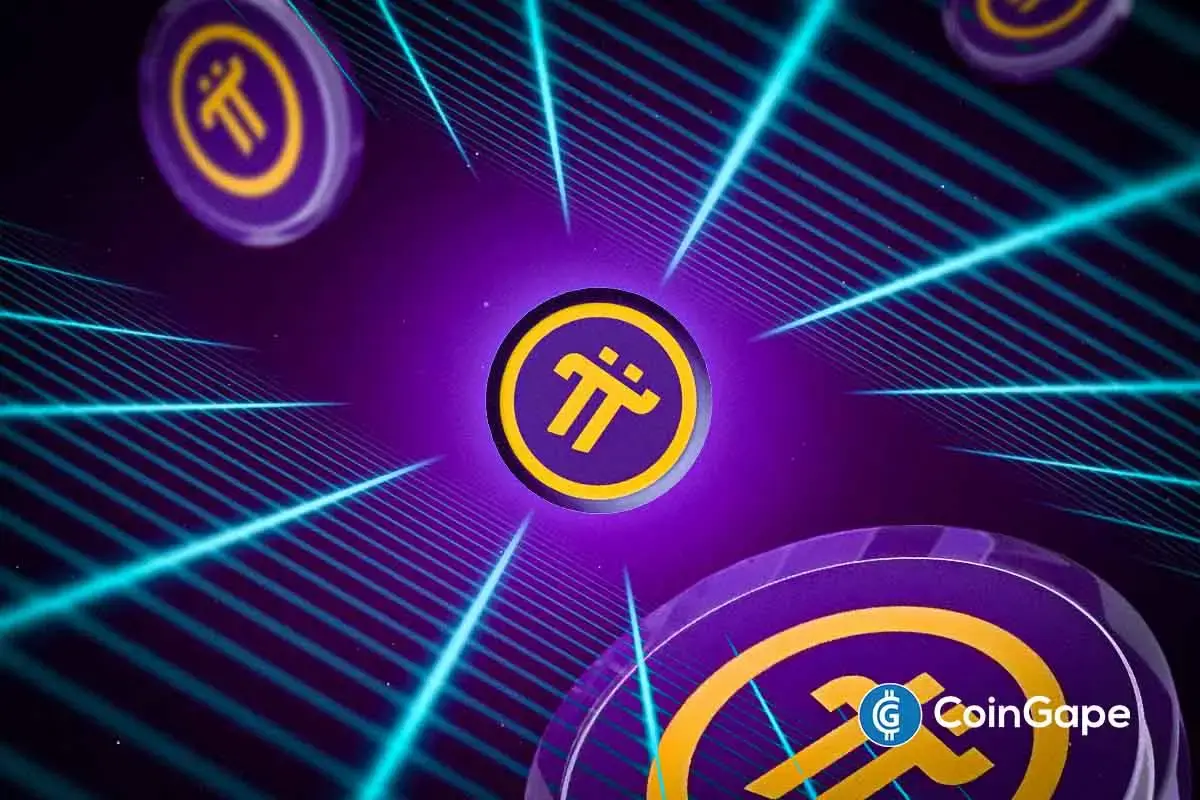Market
BingX’s Bold Step in Web3 Entertainment
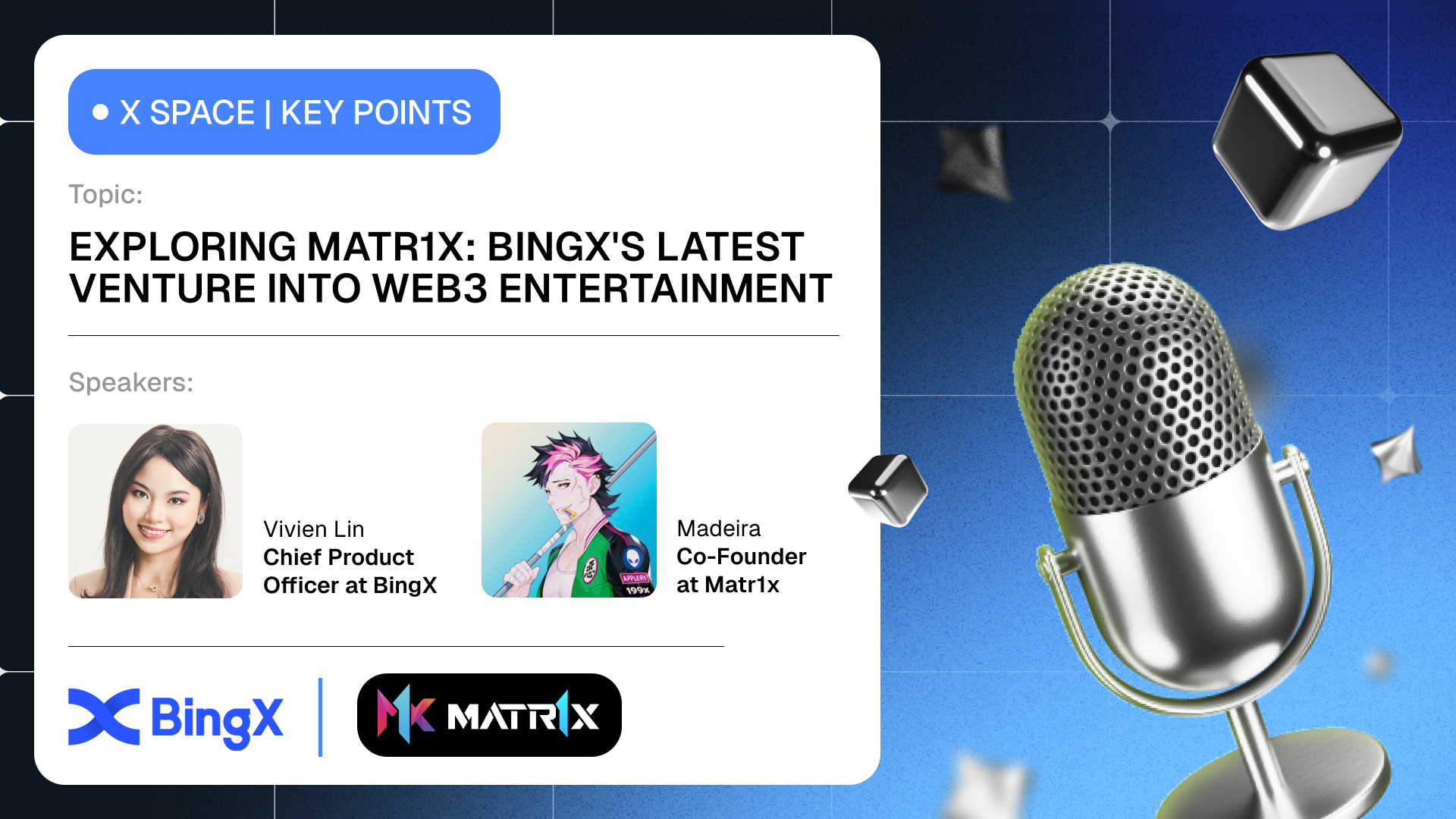

BingX, one of the world’s leading cryptocurrency exchanges, has launched the first phase of its BingX Launchpool, introducing MATR1X (MAX) — an exciting entertainment platform that blends Web3 game ,and esports with blockchain and AI technologies.
In a recent AMA, Matr1x Co-Founder Madeira and the Chief Product Officer at BingX Vivien Lin talked about what makes Matr1x special and what the future holds.
The Start and Vision
Matr1x was created to show that blockchain technology can be used for more than just finance. Madeira, with a background in finance and crypto, wants Matr1x to be more than just a gaming platform. It’s designed to be a complete system that brings more people into Web3, blending digital entertainment with blockchain.
“Web3 gaming can do things that current games cannot do. It’s a better form of value exchange and a much bigger multiplayer platform. I think Web3 gaming will exist and will take the world of gaming by storm at some point,” Madeira states.
At the center of Matr1x is the Matr1x trilogy game series. This isn’t just about playing games; it’s also about teaching players important ideas like data privacy and the benefits of decentralization.The game’s story unfolds in a future where a powerful company controls everyone’s personal information, prompting players to consider the importance of controlling their own data.
“For those who are new to crypto, we have made it easy to get involved. Players can participate in our games without needing to understand wallets or blockchain. This way, we can attract more users and eventually convert them into the Web3 space,” Madeira says.
Matr1x ecosystem also includes other games like Castile, an RPG card game, and Evermoon, a 5v5 MOBA. These games are part of Matr1x’s broader plan to offer a variety of gaming experiences, appealing to both casual and serious gamers. The platform also includes GEDA, an esports platform for organizing tournaments and events, adding another layer to its gaming ecosystem.
“Many people thought the industry is a scam and doesn’t create any value. But I wanted to build something real and show that blockchain technology has practical applications beyond just finance”, Madeira adds.
How Matr1x Makes Money and Engages Players
Matr1x plans to make money similarly to popular games like Counter-Strike (CS), which earns a lot from skin trading and in-game purchases. This approach has already shown promise, with transactions involving skins and loot boxes reaching 13 million USDT shortly after launch.
To get more people involved, Matr1x will host esports tournaments. These events are a great way to attract a wide audience, from young gamers to experienced players.
“We hosted the Matr1xFile Asian Masters 2024 with the grand final at the Hong Kong Web3 Festival. We got almost 2 million live viewers, showing the immense interest and potential in Web3 gaming and esports,” Madeira shares.
AI is also a key part of Matr1x. The project plans to use AI not only to make the games more fun but also to introduce new ways to play. For example, AI-trained bots could play in games, allowing for both human and AI competitions. This approach could attract a wide range of players, including those interested in AI and learning more about it.
Promising Partnership with BingX
Vivien Lin highlighted the partnership between Matr1x and BingX, showing how this collaboration brings new Web3 and AI-driven content to BingX’s platform. The BingX Launchpool, currently featuring MATR1X (MAX), allows users to earn tokens by staking USDT or BTC, providing a smooth and easy experience.
This launch marks an important milestone for BingX, which has recently partnered with Chelsea FC, showcasing its expansion into the sports world.
“This launch represents our unwavering commitment to delivering innovative and rewarding experiences for our community, allowing them to participate in and explore the future of digital entertainment,” Vivien Lin notes.
The partnership between Matr1x and BingX aims to bring exciting new content to BingX’s platform and attract users interested in the latest digital experiences. This initiative not only encourages participation but also helps users become familiar with the Matr1x ecosystem, potentially turning casual users into active community members.
“Quality assets like Matr1x are very good additions to our community. By partnering with Matr1x, we want to help the project gain more exposure and bring it to our user base. We are glad to bring projects like Matr1x, that can provide long-term value, to our platform,” Lin adds.
Future Plans and Community Involvement
Matr1x has big plans for the future. The project aims to keep developing new games and features, with a strong focus on creating an inclusive and engaging ecosystem.
One unique aspect of Matr1x is its commitment to community involvement. MAX token holders can vote on various aspects of the platform’s future, from game development to ecosystem improvements. This ensures that the project stays aligned with what the community wants.
“We look forward to supporting Matr1x’s growth and exploring further synergies. There’s so much potential, especially with many new games and features coming up,” Vivien Lin comments.
Madeira also talked about potential ways to generate money in the future, such as possibly adding transaction fees. However, the main goal is to build a sustainable ecosystem where the community’s contributions are reinvested into the platform.
Matr1x is a bold new project aiming to change the future of gaming. Combining Web3 technology with AI and esports offers a unique and immersive experience. The project’s focus on educating users about data privacy and decentralization sets it apart, promising not only to entertain but also to inform.
“We think going forward into the future, Matr1x will be much more valuable compared to now. We aim to bring mass adoption to our industry through gaming and social platforms,” Madeira concludes.
Matr1x future success will depend on its ability to attract and keep a diverse group of users. Partnership with BingX and a strong focus on community involvement provide a solid foundation for growth. For anyone interested in the future of gaming and blockchain, Matr1x is a project worth watching.
Disclaimer
In compliance with the Trust Project guidelines, this guest expert article presents the author’s perspective and may not necessarily reflect the views of BeInCrypto. BeInCrypto remains committed to transparent reporting and upholding the highest standards of journalism. Readers are advised to verify information independently and consult with a professional before making decisions based on this content. Please note that our Terms and Conditions, Privacy Policy, and Disclaimers have been updated.
Market
Onyxcoin (XCN) Shows Reversal Signs After 200% Rally
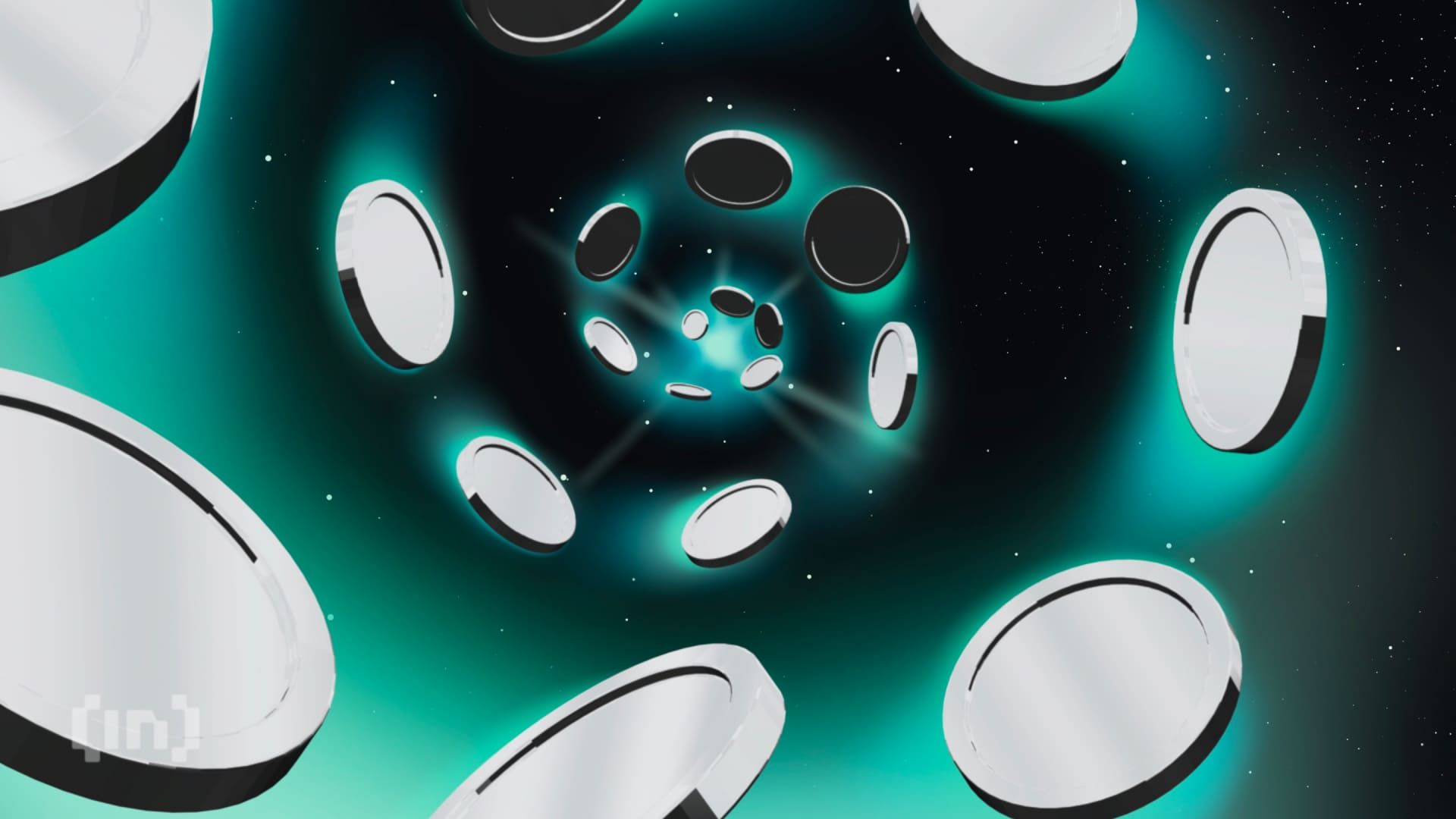
Onyxcoin (XCN) is down nearly 10% over the past seven days, cooling off after a sharp 200% rally between April 9 and April 11. Momentum indicators suggest that the bullish trend may be losing strength, with both the RSI and ADX showing signs of fading conviction.
While XCN’s EMA lines remain in a bullish formation, early signs of a potential reversal are emerging as short-term averages begin to slope downward. The coming days will be key in determining whether Onyxcoin can stabilize and resume its climb—or if a deeper correction is on the horizon.
Onyxcoin Shows Early Signs of Stabilization, but Momentum Remains Uncertain
Onyxcoin’s Relative Strength Index (RSI) is currently sitting at 43. Readings above 70 typically indicate that an asset is overbought and could be due for a pullback, while readings below 30 suggest it may be oversold and poised for a potential rebound.
Levels between 30 and 70 are considered neutral, often reflecting consolidation or indecision in the market.

XCN’s RSI signals a neutral state but shows signs of gradual recovery. While not yet a clear bullish signal, yesterday’s upward move suggests that bearish momentum may be easing.
However, the fact that RSI failed to hit above 50 reflects lingering uncertainty and a lack of sustained buying pressure.
For now, XCN appears to be in a wait-and-see phase, where a continued climb in RSI could signal a shift toward renewed upside, but any further weakness might keep the price trapped in a consolidation range.
XCN Uptrend Weakens as ADX Signals Fading Momentum
Onyxcoin’s Average Directional Index (ADX) has declined to 11, down from 13.92 yesterday and 15.26 two days ago. This decline reflects a consistent weakening in trend strength.
The ADX is a key component of the Directional Movement Index (DMI) and is used to measure the strength—not the direction—of a trend on a scale from 0 to 100.
Values below 20 typically suggest that the market is trending weakly or not at all, while readings above 25 confirm a strong and established trend.

With the ADX now at 11, Onyxcoin’s trend is losing momentum, even though it technically remains in an uptrend. This low reading suggests the current bullish phase is fragile and may lack the conviction needed for sustained upward movement.
Combined with EMA lines that are beginning to flatten, the weakening ADX adds weight to the possibility that the trend could soon shift or stall.
If no surge in buying pressure emerges to reinforce the uptrend, XCN may enter a period of sideways movement or even a reversal in the short term.
Onyxcoin at a Crossroads as EMA Lines Hint at Possible Trend Reversal
XCN EMA lines remain bullish for now, with short-term averages still positioned above long-term ones.
However, the short-term EMAs have started to slope downward, raising the possibility of a looming death cross—a bearish crossover in which the short-term average falls below the long-term average.
If this crossover materializes, it would signal a shift in trend direction and could trigger a deeper pullback, after a 200% rally between April 9 and April 11, making it one of the best-performing altcoins of the previous weeks.
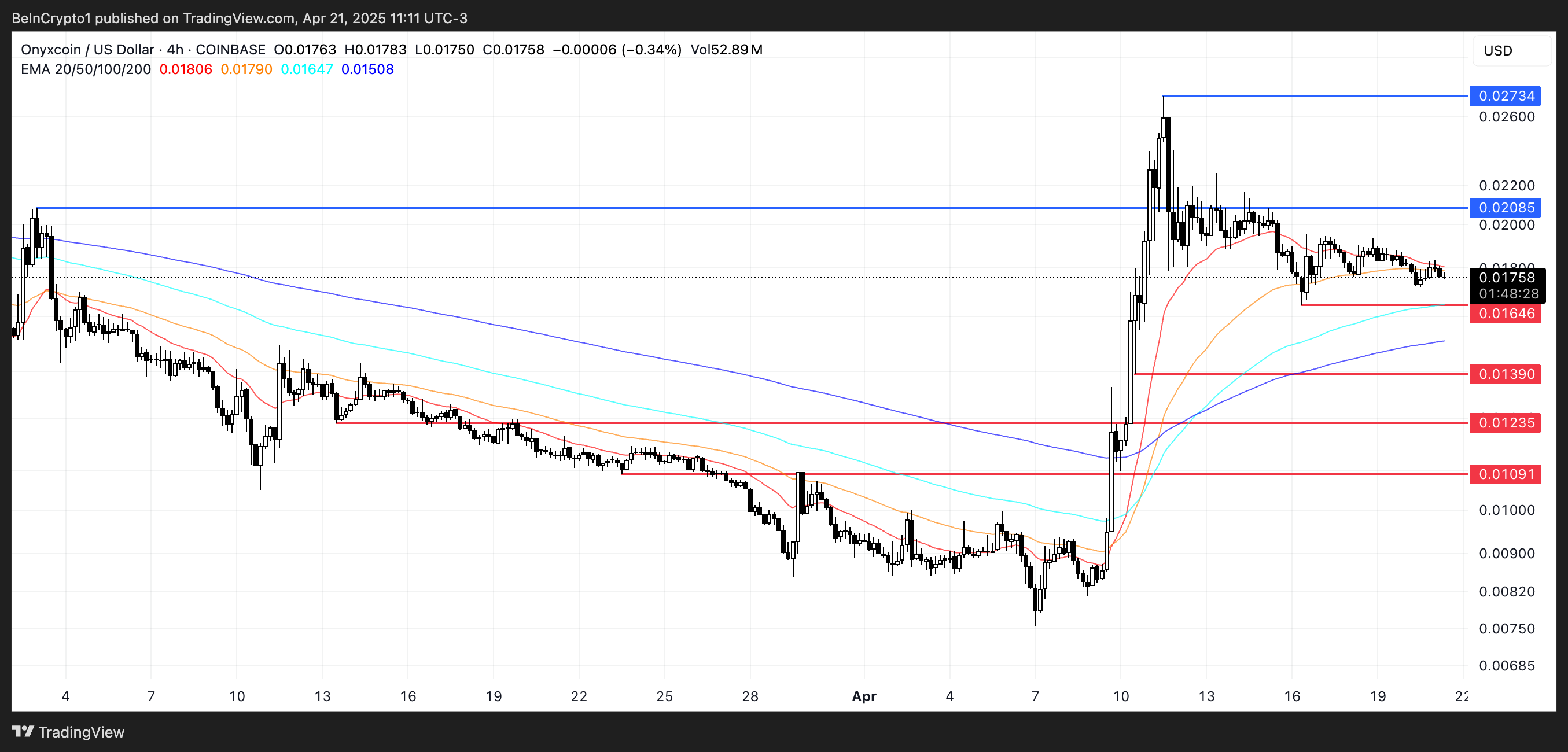
Key support levels to watch are $0.016, followed by $0.0139 and $0.0123. If bearish momentum accelerates, XCN could drop as low as $0.0109, marking a potential 38% correction from current levels.
On the flip side, if bulls manage to regain control and reinforce the existing uptrend, XCN could challenge the resistance at $0.020.
A breakout above that level would open the door for a potential rally toward $0.027, representing a 55% upside.
Disclaimer
In line with the Trust Project guidelines, this price analysis article is for informational purposes only and should not be considered financial or investment advice. BeInCrypto is committed to accurate, unbiased reporting, but market conditions are subject to change without notice. Always conduct your own research and consult with a professional before making any financial decisions. Please note that our Terms and Conditions, Privacy Policy, and Disclaimers have been updated.
Market
3 Altcoins to Watch in the Fourth Week of April 2025

The crypto market has shown consistent growth over the past few days, helping altcoins alongside Bitcoin to recover. However, relying solely on broader market cues or momentum will not sustain price growth.
BeInCrypto has analyzed three altcoins for investors to watch in April, as important developments are set to unfold this week.
Tutorial (TUT)
TUT price has remained stable throughout most of the month, currently hovering below the $0.027 resistance level. Successfully breaching this barrier is crucial for recovering the 53% losses incurred in March. A price rise above $0.027 could signal a positive trend and further upward movement in the coming weeks.
If this trend continues, TUT could push toward the next resistance level of $0.039, indicating strong momentum.
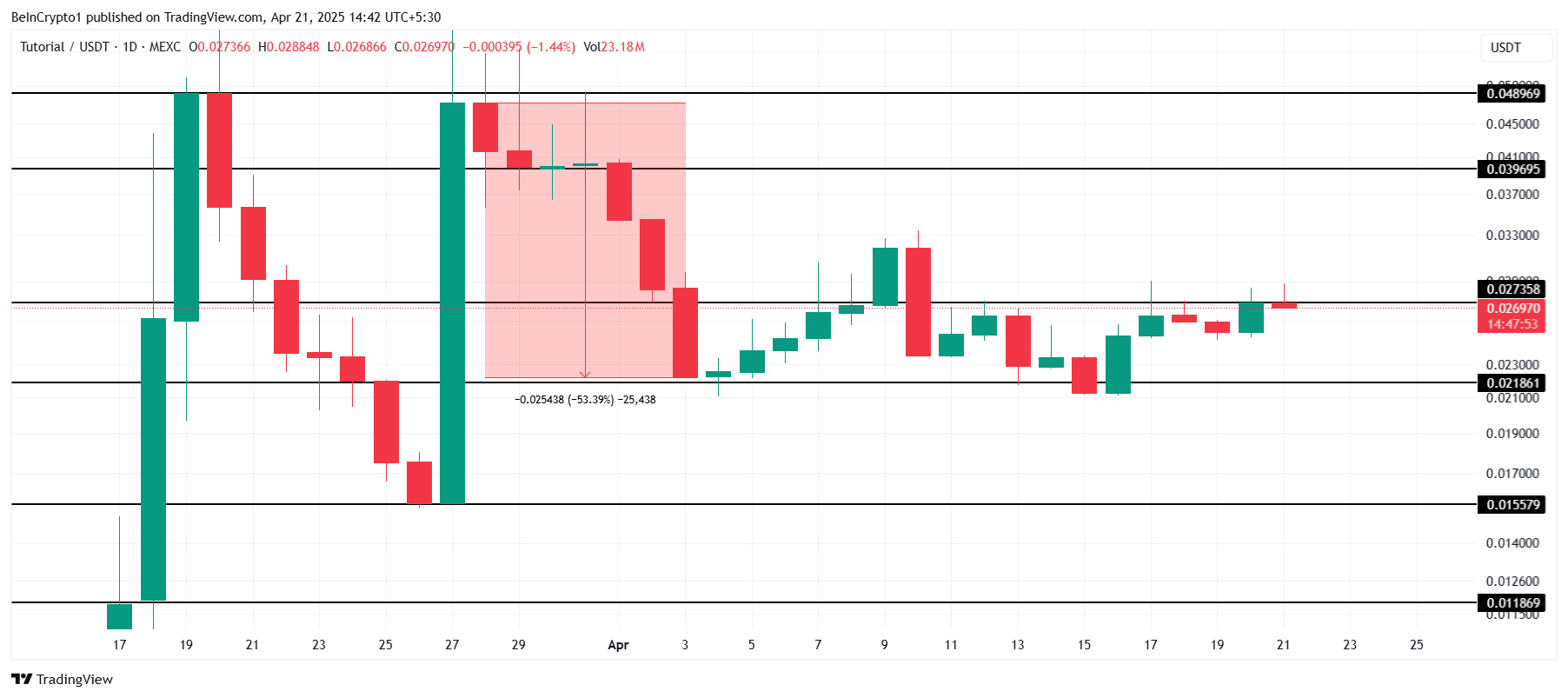
However, if TUT fails to break above the $0.027 resistance, the price could decline below $0.021. Such a drop would likely invalidate the bullish outlook and lead to further losses. In that scenario, the altcoin’s price might fall to $0.015, a significant setback for the token’s recovery.
Injective (INJ)
Injective’s price has surged by 17% in recent days, fueled by anticipation surrounding the upcoming Lyota Mainnet Upgrade. Set to go live on April 22, the upgrade is expected to enhance Injective’s infrastructure, performance, and transaction speeds. This has sparked optimism, driving the price higher in the short term.
Currently trading at $8.97, Injective is nearing the $9.11 resistance level. If it successfully breaches this barrier, the price could move beyond $10.00, potentially reaching $10.35. The positive sentiment surrounding the Lyota Mainnet Upgrade is likely to continue driving the token’s growth if it can surpass these levels.
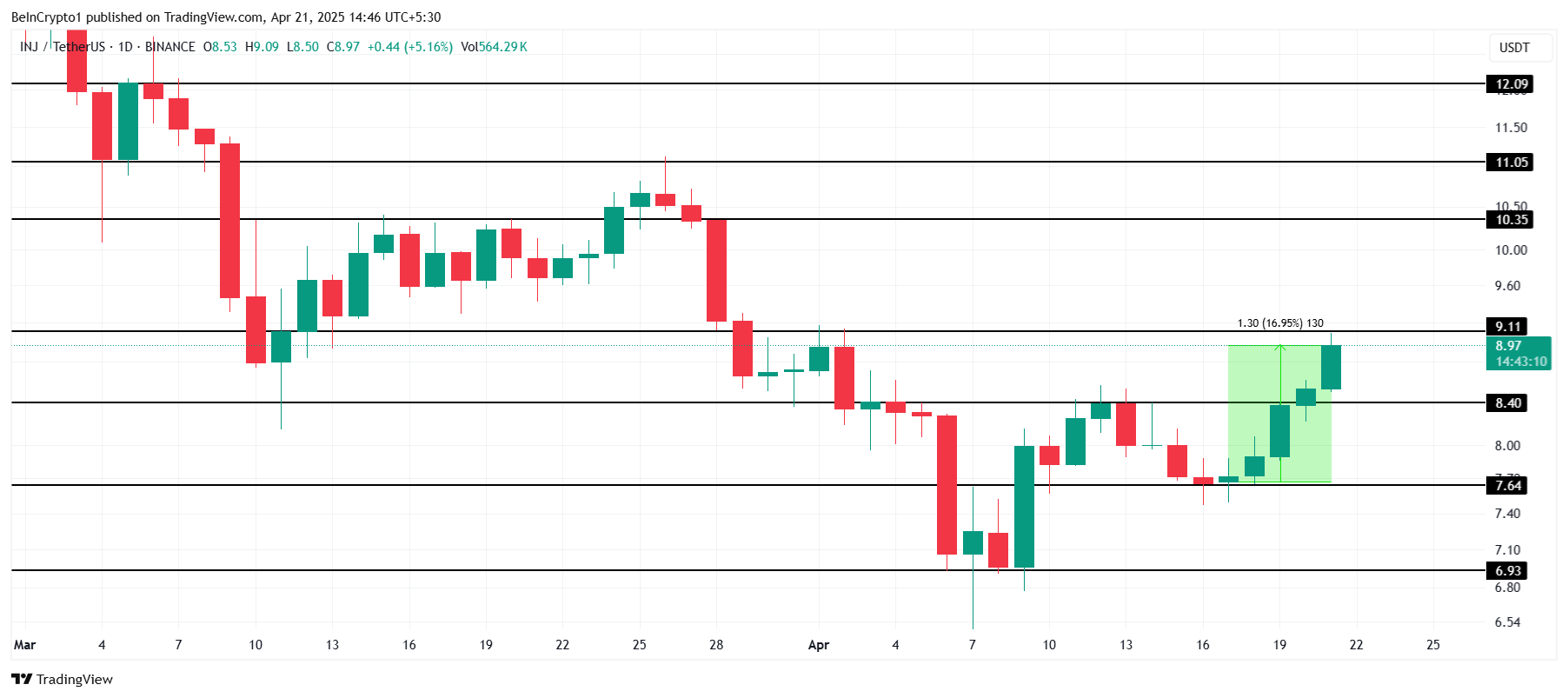
However, if Injective fails to break through the $9.11 resistance, as seen earlier in April, the price could fall below $8.40. This would signal a retreat and could see the token dip to $7.64, invalidating the bullish outlook and erasing recent gains.
BNB
BNB’s price currently stands at $604, experiencing a two-month downtrend. The altcoin is struggling to breach the resistance of $611. To push past this barrier, BNB needs strong support from the broader market or upcoming developments that could provide a catalyst for price movement and reversal.
One potential catalyst is the Lorentz opBNB mainnet hard fork, which is scheduled for today. The hard fork aims to enhance the chain’s speed and responsiveness. If successful, this could help BNB break the $611 resistance and push the price toward the next level of $647, spurring bullish sentiment.

However, if the hard fork’s impact fails to meet expectations, BNB could struggle to maintain upward momentum. In this case, the price may slip below the support of $576, potentially falling as low as $550. This would invalidate the current bullish outlook and likely continue the downtrend.
Disclaimer
In line with the Trust Project guidelines, this price analysis article is for informational purposes only and should not be considered financial or investment advice. BeInCrypto is committed to accurate, unbiased reporting, but market conditions are subject to change without notice. Always conduct your own research and consult with a professional before making any financial decisions. Please note that our Terms and Conditions, Privacy Policy, and Disclaimers have been updated.
Market
How Will it Impact OM Price?

MANTRA CEO, JP Mullin, is burning 150 million OM tokens from his own allocation and engaging other ecosystem partners to burn an additional 150 million tokens. This 300 million OM token burn aims to restore investor trust in the project and stabilize the altcoin’s price dynamics.
OM is attempting to recover from one of the most dramatic crashes in recent crypto history. On April 13, it lost over 90% of its value in a single hour. The collapse, which erased more than $5.5 billion in market cap, triggered widespread accusations of insider activity and manipulation within the Real-World Assets (RWA) sector.
Understanding MANTRA’s Token Burn
Mantra, once one of the biggest players in the Real-World Assets (RWA) sector, suffered a dramatic collapse on April 13, with its token crashing over 90% in less than an hour and wiping out more than $5.5 billion in market capitalization.
The plunge followed a rapid surge earlier this year, when OM rose from $0.013 to over $6, pushing its fully diluted valuation to $11 billion. The crash was reportedly triggered by a $40 million token deposit into OKX by a wallet allegedly linked to the team, sparking fears of insider selling.
Panic spread quickly as rumors of undisclosed OTC deals, delayed airdrops, and excessive token supply concentration fueled mass liquidations across exchanges.
Despite co-founder John Patrick Mullin denying any wrongdoing and blaming centralized exchanges for forced closures, investors and analysts raised concerns about potential manipulation by market makers and CEXs, drawing comparisons to past collapses like Terra LUNA.

In an effort to rebuild trust, Mullin has announced the permanent burn of his 150 million OM team allocation. The tokens, originally staked at mainnet launch in October 2024, are now being unbonded and will be fully burned by April 29, reducing OM’s total supply from 1.82 billion to 1.67 billion.
This move also lowers the network’s staked amount by 150 million tokens, which could impact on-chain staking APR.
Additionally, MANTRA is in talks with partners to implement a second 150 million OM burn, potentially cutting the total supply by 300 million tokens.
OM Price Faces Critical Test as Token Burn Battles Lingering Market Doubt
Despite MANTRA’s ongoing token burn efforts, it’s still uncertain whether the move will be enough to fully restore investor confidence in OM.
From a technical standpoint, if momentum begins to recover, OM could test the immediate resistance at $0.59. A successful breakout at that level may pave the way for further gains toward $0.71, with additional key hurdles at $0.89 and $0.997 standing between the token and a return to the psychologically important $1 mark.
However, reclaiming these levels will likely require sustained buying interest and broader sentiment recovery across the Real-World Assets (RWA) sector.

On the downside, if the token burn fails to shift sentiment or if selling pressure continues, OM risks resuming its decline.
The first key support lies at $0.51, and a breakdown below that level could send the price further down to $0.469.
Given the scale of the recent crash and the lingering distrust among investors, the path to recovery remains fragile—OM now sits at a critical crossroads between a potential rebound and further erosion of its market value.
Disclaimer
In line with the Trust Project guidelines, this price analysis article is for informational purposes only and should not be considered financial or investment advice. BeInCrypto is committed to accurate, unbiased reporting, but market conditions are subject to change without notice. Always conduct your own research and consult with a professional before making any financial decisions. Please note that our Terms and Conditions, Privacy Policy, and Disclaimers have been updated.
-
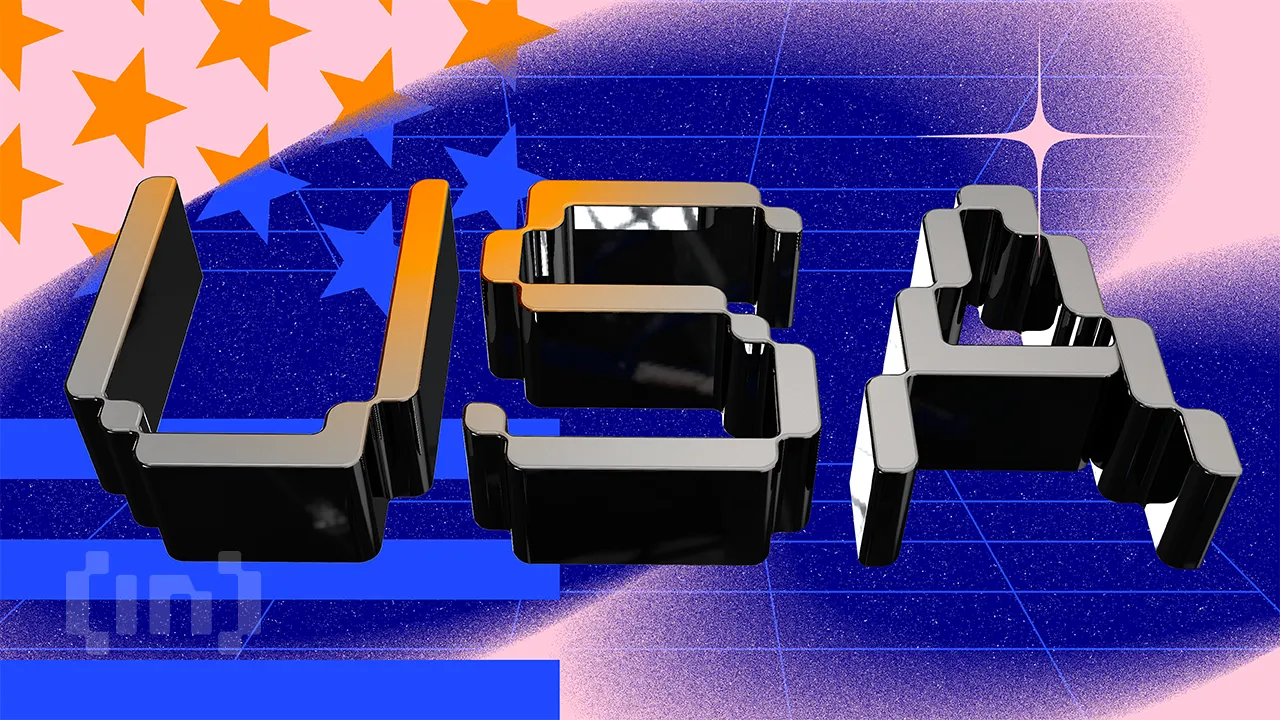
 Bitcoin14 hours ago
Bitcoin14 hours agoUS Economic Indicators to Watch & Potential Impact on Bitcoin
-

 Market24 hours ago
Market24 hours agoWill XRP Break Support and Drop Below $2?
-
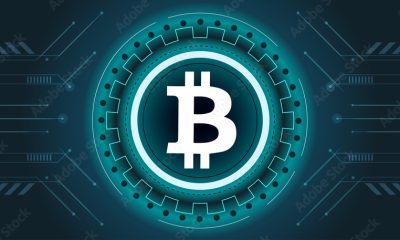
 Bitcoin23 hours ago
Bitcoin23 hours agoBitcoin LTH Selling Pressure Hits Yearly Low — Bull Market Ready For Take Off?
-
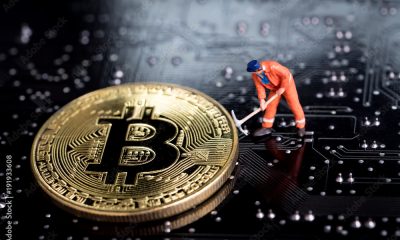
 Bitcoin20 hours ago
Bitcoin20 hours agoHere Are The Bitcoin Levels To Watch For The Short Term
-

 Market17 hours ago
Market17 hours agoBitcoin Price Breakout In Progress—Momentum Builds Above Resistance
-
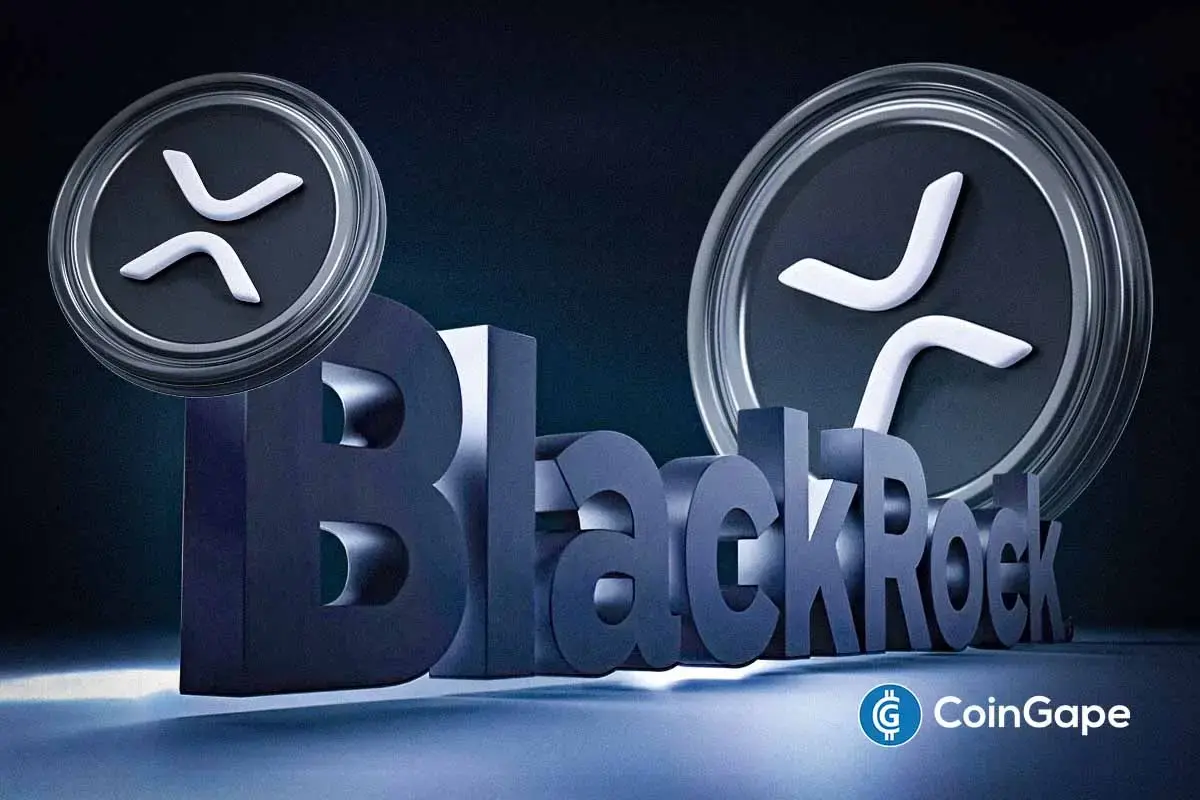
 Altcoin12 hours ago
Altcoin12 hours agoExpert Reveals Why BlackRock Hasn’t Pushed for an XRP ETF
-
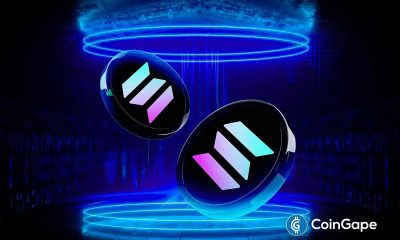
 Altcoin17 hours ago
Altcoin17 hours agoExpert Says Solana Price To $2,000 Is Within Reach, Here’s How
-

 Market15 hours ago
Market15 hours agoSolana Rallies Past Bitcoin—Momentum Tilts In Favor of SOL


